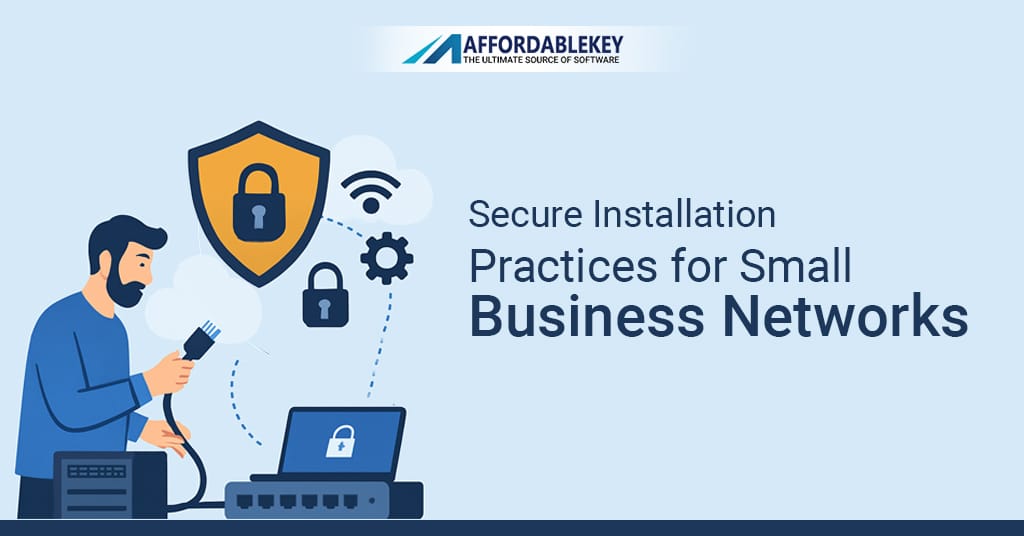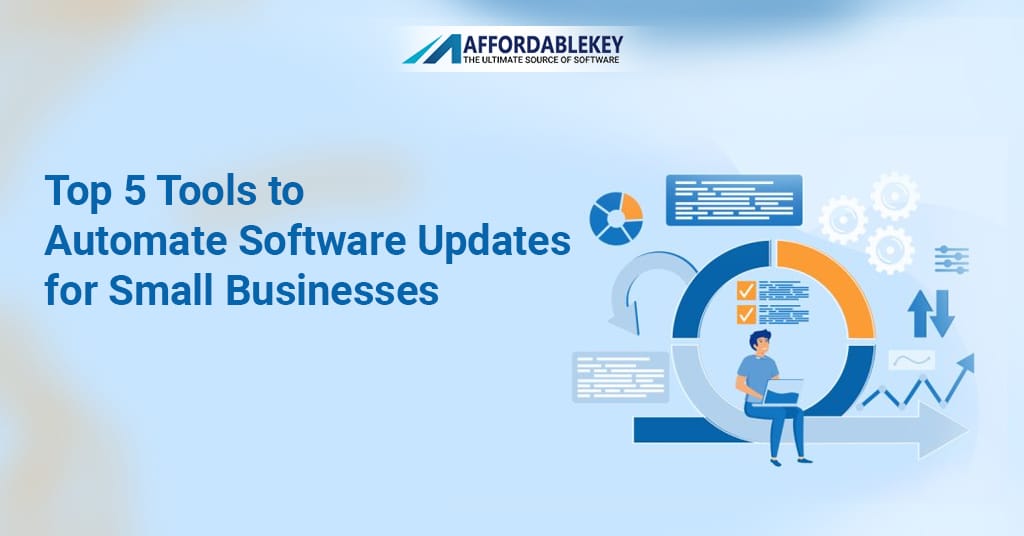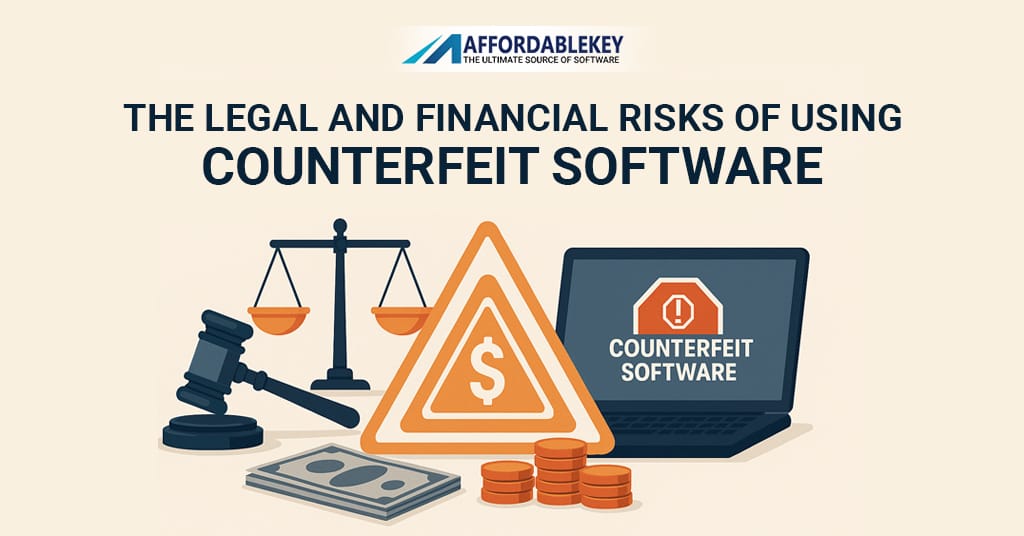Secure Installation Practices for Small Business Networks

Small Business Networks provide the foundation for day-to-day operations. They support email, software, and file sharing. Without them, your business halts. These networks connect computers, routers, servers, and mobile devices. Secure networks help small businesses grow safely. When built right, they last for years. Weak networks cause data theft and slow performance.
Small businesses often think big tech threats won’t target them. That’s dangerous. Hackers look for weak networks, and small businesses are frequently the easiest targets. The cost of a data breach can shut your business down.
So, building strong security from the start matters. Securely installed Small Business Networks keep your customer data and systems safe. It protects privacy and builds trust.
This guide talks about ways to install and secure networks. We’ll keep the words easy to follow. You don’t need a PhD to understand it. It’s built for business owners, not tech geniuses.
Every business that uses Wi-Fi, computers, or databases needs a secure network. These practices also protect internal systems from cyber disasters. Take time to build secure networks, and your business will thank you.
Transitioning to strong network safety practices doesn’t have to be hard. You need the right tools and approach. Let’s walk you through the right process. Step by step.
Importance of Secure Installation
Secure installations are not just optional. They are critical. Small Business Networks hold private data, including customer details and payment info. Without safe setups, hackers can steal all that.
Customers trust small businesses with their data. That trust brings loyalty. But one breach can lose it forever. Not installing systems securely can cause loss of clients, money, and reputation.
Cyberattacks are increasing. Every business needs prevention steps. A weak network can invite ransomware and viruses. It can slow down computers or leak sensitive files. Secure setups avoid these dangers.
With a secure install, your networks run smoothly. You will see fewer issues daily. Devices stay uncluttered. And data remains protected.
Another reason is government rules. Many laws now require data protection. If you break those laws, your business can face heavy legal fines.
Setting up a network safely also makes adding users or systems easier in the future. Everything is organised from day one. You save time later.
So, think of secure installation as a future investment. It’s protection for your plans. It supports growth and keeps hackers away.
Let’s go deeper into these installations over the next sections. We’ll keep instructions practical and simple.
Risks Involved Without Network Security
When Small Business Networks lack security, dangers rise fast. Hackers love easy targets. Threats enter through weak Wi-Fi, weak passwords, and unpatched software.
Data loss is one major risk. Once lost, data is hard to recover. This loss can stop your operation, sometimes for days or weeks.
Another risk is malware. Malicious software can destroy files. It can steal credit card info or log in to emails without you knowing.
Lack of security opens the door to data leaks. Imagine employees’ details floating on the dark web. That’s what poor networks risk.
Unsecure networks also run more slowly. Spyware can track every move and cause devices to crash.
Reputation damage is also a hidden danger. Customers leave when trust breaks. Even one hack can create fear about your services.
Legal penalties may follow certain data breaches. Non-compliance with data protection laws isn’t cheap.
Competitors with stronger networks grow faster. Weak setups put your business at a backfoot.
In short, unsafe networks are costly in every way. The longer you leave your Small Business Networks open, the more risk builds.
This guide will help stop that. Preventing issues is easier than fixing them.
Network Planning and Assessment
Secure installation starts with a smart plan. Jumping into setups without planning causes mistakes. Small Business Networks need a clear layout before the first cable is plugged in.
Assess your business size, number of employees, and how many devices you’ll use. Also, list the software and cloud services your team needs.
Draw your network on paper. Where will the router go? Will you use wireless or wired connections? How will remote workers connect safely?
Think about future growth, too. A network only good for 5 users won’t help when you reach 50 users. Plan.
Define roles for access. Not everyone needs admin rights. Segment the network so visitors don’t mix with main systems.
You should decide the level of backup now. Ask if you will use local backups, cloud storage, or both.
Choose network devices based on speed, security promises, and support. Don’t just pick random items. Research matters.
Finally, write a basic policy document. It helps guide the installation and gives you a reference.
Good planning makes installation quick and smart.
Router and Modem Security
Your modem and router are network anchors. Weak setups here mean everything else can break down, too.
Buy from trusted brands. Don’t use outdated routers. Older models often lack the security features Small Business Networks need.
Before using a new router, change its default name and password. Never keep factory settings active. Hackers know those.
Use WPA3 security for Wi-Fi. It’s stronger than WPA2. And disable network sharing options unless needed.
Update router firmware often. Manufacturers release patches to respond to new threats.
Always disable remote router access unless necessary. Remote access is a big hole for hackers to enter.
Turn off features you don’t use, like WPS and Universal Plug and Play. They make hacking easier.
If your router offers guest networks, use them. This keeps outsiders off your main system.
Like your front door lock, your router protects everything behind it. Start with it.
Setting Up Firewalls
A firewall acts like your network’s bodyguard. It blocks bad traffic and lets good traffic pass.
For Small Business Networks, firewalls are essential. They protect systems, users, and measured performance.
Both hardware and software firewalls have benefits. Use both for layered protection.
Enable firewalls on every network-connected device. Yes, even printers and cameras.
Set rules for incoming and outgoing network traffic. Don’t allow open ports unless they serve a purpose.
Review logs regularly. Firewalls show where attacks almost happened. This feedback helps tighten rules.
Port scanning, packet sniffing, and intrusion prevention are key elements in modern firewalls. Make sure yours supports them.
Using firewalls prevents cyberattacks, downtime, and unauthorised access.
They guard Small Business Networks 24/7.
Password Best Practices
Weak passwords break even the strongest systems. Small Business Networks need strong passwords everywhere.
Use passphrases, not short passwords. “SafeCloudData2025!” is better than “12345678”.
Don’t repeat usernames and passwords across accounts. Each user should have unique credentials.
Enforce two-factor authentication (2FA). This adds an extra layer of safety.
Change passwords every 3 to 6 months. Also, update them after any staff resignations.
Use password managers to store and share credentials securely. Avoid Excel files or sticky notes.
Set systems so passwords must meet length and complexity rules.
Make password discipline a part of your business culture.
Protecting Small Business Networks becomes easier with smart login habits.
VPN Implementation and Benefits
VPNs (Virtual Private Networks) allow safe remote access. They encrypt data while travelling across the internet.
For Small Business Networks, they provide privacy and protection. VPNs hide IP addresses.
Employees can work anywhere using secure VPN tunnels. Even public Wi-Fi becomes safer.
Choose business-level VPNs. Free versions can log your details or not function properly.
Keep VPN apps updated. Outdated versions lose security value.
Use multi-factor login with every VPN connection. This verifies real users, not bots.
Pick VPNs that support mobile devices and desktops.
Teach staff how to use it. A tool only helps when people understand it.
VPNs stop man-in-the-middle attacks and data snooping.
They keep Small Business Networks safe beyond office walls.
Device Protection and Updates
Take device protection seriously. Weak devices open the door to cyber attacks. Every laptop, smartphone, PC, or tablet in Small Business Networks is a target.
Keep all software and operating systems updated. Updates contain patches for known bugs and security holes. Skipping updates can leave you vulnerable to easy attacks.
Install reliable antivirus software on all devices. Free options rarely cover every threat. It’s better to invest in strong defences. Protect against malware, ransomware, and phishing threats.
Use official app stores only. Random software from unknown sites may carry viruses. Block employees from installing unauthorised software on work devices.
Limit admin rights to specific IT users. Not everyone should be able to change system settings.
Auto-lock all devices after short periods of inactivity. That prevents unauthorised access if a device is left alone.
Encrypt hard drives. If devices are lost or stolen, encryption stops thieves from accessing confidential files.
Regularly scan devices for threats. Schedule weekly or monthly scans to monitor risks.
Reduce the number of shared devices. If shared access is required, create user-specific roles.
Protecting devices is central to reliable network performance. Even one weak device can infect a secure network.
These practices make Small Business Networks stronger at the edge, where breaches often begin. Always protect the devices that connect to your business network.
Internal vs. External Threats
Small Business Networks face both internal and external threats. You must defend from both.
External threats come from outside hackers. These include phishing attacks, ransomware, brute-force logins, or spyware.
Internal threats are often overlooked. They include careless employees or even malicious insiders. Someone may click on a harmful link or steal data for personal gain.
You can’t assume everyone inside your business is safe. Mistakes happen. Policies reduce this risk.
Restrict access to only what users need. Limit admin rights wherever possible. Always monitor who accesses what.
Set strong password policies. Train users to recognise suspicious emails or scams.
Track login and activity logs. Monitor file changes and data transfers regularly.
If someone leaves the company, remove their access that same day. Delays can lead to security issues.
Conduct audits every few months. Audits reveal access problems. Fix any weak points found.
External threats grab attention, but many attacks hide inside. Watch carefully. Your biggest risks may be hiding in plain sight.
Balancing defences for both internal and external risks secures Small Business Networks from multiple angles.
Security isn’t only about machines. It’s also about people — keeping them informed and accountable.
Employee Training and Policies
Your staff are your best protection — or your biggest weakness. Small Business Networks depend on well-trained users.
Teaching staff reduces risk. Cybercriminals often trick users through emails, links, or fake websites. Clicking can open doors to attacks.
Run basic security awareness sessions. Teach about phishing and password safety. Keep the content simple and clear.
Make security part of onboarding for new hires. Create video or digital guides for self-learning.
Set a clear IT policy. Include do’s and don’ts. Let staff know what’s allowed and what’s not.
Test employees. Simulate phishing emails. Track who clicks. Offer reminders or re-training to improve.
Share monthly tips or alerts. Show examples of new scams or threats.
If remote work is involved, train on VPNs and secure file sharing. Remote employees often bypass rules without knowing.
Remind staff not to insert USBs from unknown sources. These devices may carry malware.
Reward safe behaviour. Positive feedback improves compliance more than punishment.
Good staff habits protect Small Business Networks better than any software ever will. Don’t ignore training. Train once, and reinforce often.
The more your team knows, the fewer mistakes they’ll make. Set them up for success.
Backups and Disaster Recovery Plans
What happens if everything crashes? Or if hackers encrypt your files? This is where backups and recovery plans save your business.
Small business Networks must back up data frequently. Backups must include customer data, invoices, employee files, and project work.
Use both local and cloud backups. Local backups are faster but may get destroyed by fire or theft. Cloud backups are safer, though slower to restore.
Schedule automatic daily backups. Please don’t leave it to manual steps. Humans forget. Systems don’t.
Run periodic tests on backup systems. Don’t just hope they work. Confirm data can be restored.
Store multiple backup copies in different places. Two copies locally and one in the cloud is a good model.
Label and organise folders. In a crisis, clear labels save precious time.
Disaster plans are equally important. Write down step-by-step instructions on restoring systems. Assign roles to team members for clear responsibility.
Include emergency contact numbers — including service vendors or IT experts.
In cases of floods, ransomware, or power failure, the speed of recovery matters.
Planning avoids panic later. Secure backups and restoration methods give you power, even in chaos.
This is how strong Small Business Networks recover from disasters quickly.
Regular Monitoring and Maintenance
Installing everything is not the end. Maintenance keeps Small Business Networks safe in the long run.
Everything needs monitoring — routers, software, user behaviour, and security logs.
Don’t assume things will run forever. Set reminders for password checks, update patches, and license renewals.
Use network monitoring tools. They catch issues before they grow. Instant alerts notify you about downtime, spikes, or unknown devices.
Update software automatically if possible. Manual processes are slow and error-prone.
Review firewall and VPN logs weekly. Look for changes or unknown login attempts.
Replace outdated hardware on schedule. Old devices invite security risks. Better to invest early than fix damage later.
Clean up unused user accounts. If someone quits or changes roles, remove unused access.
Consider hiring part-time IT auditors quarterly. Outside eyes often spot problems faster.
This constant care ensures your Small Business Networks remain strong across the years.
Prevention saves more money than repair.
FAQ’s
Q1. Why do Small Business Networks need firewalls?
Firewalls protect your network from threats like hackers and malware. They control what comes in and out.
Q2. How often should Small Business Networks update passwords?
Ideally, every 3-6 months. Change passwords after staff leave. Use two-factor authentication for strong protection.
Q3. Can free antivirus software protect Small Business Networks?
Free tools help but often lack full features. Paid antivirus offers better support, scanning, and management.
Q4. What is the best way to back up Small Business Networks’ data?
Use both local and cloud backups. Automate daily backups. Test your backups monthly to ensure recovery works.
Q5. Do Small Business Networks really need VPNs?
Yes. VPNs encrypt remote access. They protect data when employees work outside the office.
Why Choose AffordableKey for IT Solutions
Small Business Networks need a secure installation from the right provider. DIY setups may work short-term, but miss key protections.
That’s where AffordableKey comes in.
AffordableKey offers cost-friendly IT services tailored for small businesses. They focus on security and long-term stability — not just quick fixes.
Their team helps with firewall setup, router security, VPN solutions, backup strategies, and more. They also train your employees on safe digital habits.
You receive full support, from setup to monitoring. Their experts guide you with easy steps.
Good help doesn’t have to break the bank. AffordableKey ensures that even small teams build big protection.
Whether you’re a startup or a growing small business, they’ll help you design a secure network for growth.
Plus, with AffordableKey, you get flexible payment options and real-time customer support.
Their mission is simple: protect your systems without high costs or complexity.
Ready to build strong, safe, and smart systems? Choose AffordableKey today and start securing your future.
Let professionals build the network your business deserves.
Conclusion
Running a small business is tough. Security shouldn’t make it harder. The right steps, taken early, can protect everything you’ve built.
Small Business Networks need more than internet access. They require planning, protection, and care. From device safety to VPNs, training to backups — every part counts.
We’ve covered 14 key areas in this blog. Start using them today. Review your setup. Train your team. Scan your systems. And consider expert help from AffordableKey or trusted IT pros.
Cybercrime doesn’t rest. But with the right tools and safe habits, you stay 10 steps ahead.
Think of security like insurance for your digital life. You don’t see the value until things go wrong.
Start small. Fix one part this week. Then another next week. Within months, you’ll have a strong, secure network.
Protect your customers. Protect your data. Protect your future.
One step at a time. One smart choice at a time.
Your journey to safer Small Business Networks starts now.
mployees work outside the office.












